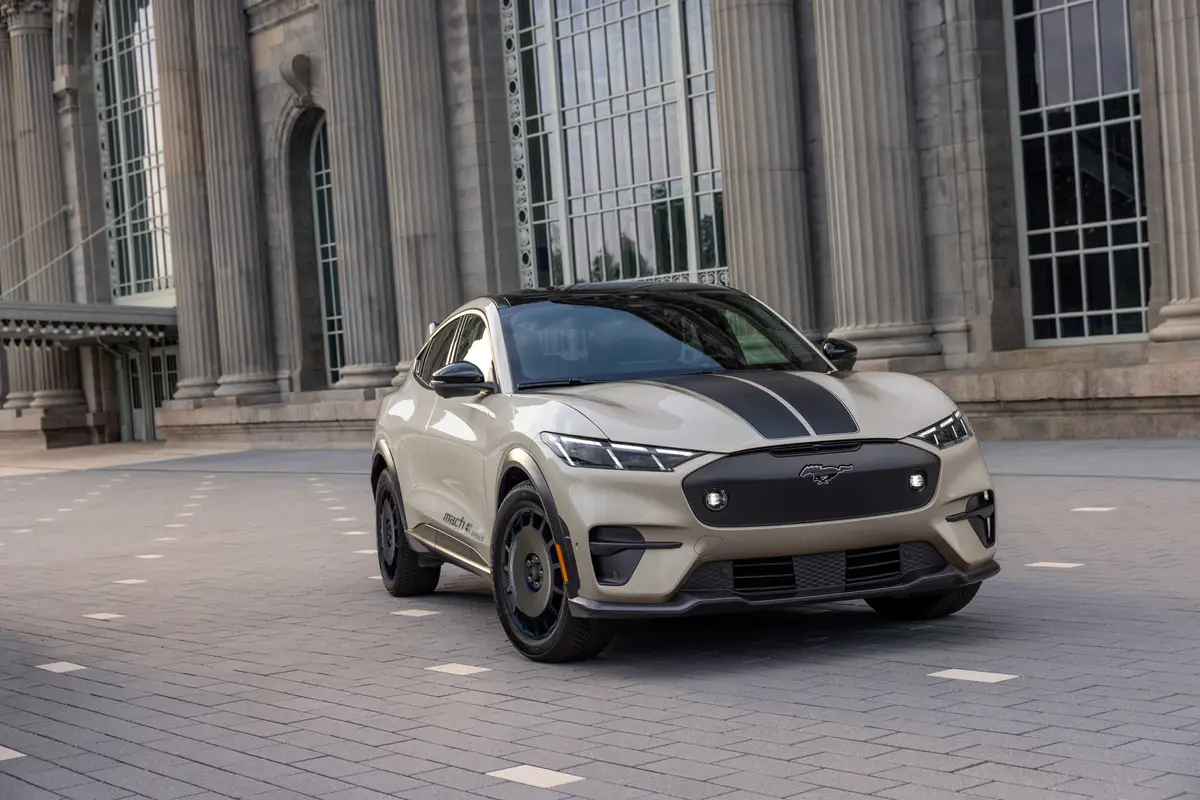chicagotribune.com's view
General Motors is on an image kick. It wants each division to stand out on its own merits, whatever those merits happen to be, such as Cadillac luxury and Chevrolet economy.
GM can save itself some time and effort and leave Pontiac alone. If you don’t know by now that this is General Motors’ performance division, you’ve been living in a cave the last 10 years–or driving a Yugo, in which case you would have been better off in that cave.
That’s not to say Pontiac is without fault. Heavens no. This is the division that set Bonneville styling back a couple of decades with the bubble-butt rear end in 1992. Critics called the design hemorrhoidal. The official industry term is “yuk.”
Not to belabor the point, but the slumping posterior was out of character for an industry benchmark for sports sedans. It was like putting a luggage rack on a Ferrari.
For 1996 the designers have come to their senses and remade the back end into an attractive setting to showcase the taillamps. The rear-end treatment makes the car look less cumbersome.
Another change finds the supercharged 3.8-liter, V-6 in the SSEi we tested gaining 15 h.p., to 240, for 1996, as if 225 h.p. wasn’t enough to excite anyone clutching the steering wheel.
The V-6 provides ample power without fear of a letdown when you pull out to pass or spot a sign on the shoulder warning of a steep grade.
We have to admit, however, that the WS6 Ram Air V-8 on the 1996 Pontiac Firebird Trans Am we tested (Cartalk, Oct. 8) is so potent in delivering 305 h.p. at the kick of the pedal that the supercharged SSEi V-6 feels much less lethal in comparison. But that’s the problem you encounter when stepping out of a 305-h.p. bullet and into a 240-h.p. slingshot without having driven a Hyundai Accent in between to put some distance between you and reality.
Let’s just say the supercharged engine performs well.
Ride and handling are typical Pontiac. You grip the road and sit flat even in that sharp cloverleaf exiting the tollway. In fact, the suspension performs so well you accelerate into, during and out of that turn to merge effortlessly into the flow of traffic.
Contributing to the handling are independent front and rear suspension with automatic self-leveling in the rear, 16-inch performance radial tires and Magnasteer, a new variable effort power steering offered in a number of GM cars for 1996 that uses magnetism to provide optimum maneuverability and stability. Computer command ride control smooths out the bumps in the road and makes tar marks feel like you are passing over putty. The package means sure-footed horizontal and vertical control over the car.
Dual air bags and four-wheel anti-lock brakes are standard. Traction control is available in an option package or as a stand-alone goodie for an extra $175. Those in the Snow Belt or who drive on wet roads or who like to dr ive aggressively will want traction control to limit wheel slippage. Our gripe is that you have to pay $175 extra for a system that probably costs Pontiac only a few bucks and should have been made standard on a $26,000 car sporting a 240-h.p.engine.
The SSEi, an option package on the regular SSE for 1996, is roomy, comfortable, quiet and affords ample trunk room. Too bad there aren’t more storage compartments in the cabin. Cupholders in each front door are neat, but it would be nice to have a larger storage bin in the center console, along with a coinholder for those who travel pay roads.
Another handy feature is the head-up display, which provides a digital speedometer reading for the driver in the windshield.
However, there are some aggravations. In the next generation Bonneville, Pontiac could simplify the air/heat controls so you can dial the direction you want the air to flow–head, legs, arms–and not have to fiddle with a mode button that makes y u take your eyes off the road to check a dark screen to where the air is going.
Also, Pontiac could come up with a better design for the power sunroof so you don’t get so much air howl back into the cabin.
Our test car also came with articulating power seats as a whopping $1,024 option, a price for which we expected the seat to articulate in a foreign language or two and not just up/down, forward/backward and in/out on the side bolsters.
There are 12 buttons in the center console that control those movements for driver or passenger seat. But Pontiac needs to find a better design or a better button location because a small pet or child in Mom’s arms can easily touch any of the 12 buttons to send an occupant into unintended articulation. We experienced such movement when the Maltese chose to stretch on the interstate, striking the seat forward button as the vehicle was traveling a mile or two more than the posted limit. The Maltese was quickly written out of the will–again.
Only other gripe is that Pontiac is letting the price reach rarified air. With options, the hefty $26,559 base price tops $32,000.
>> 1996 Pontiac Bonneville SSEi Wheelbase: 110.8 inches Length: 202.3 inches Engine: 3.8-liter, 240-h.p., supercharged V-6 Transmission: 4-speed automatic EPA mileage: 17 m.p.g. city/26m.p.g. highway Base price: $26,559 Price as tested: $31,461. Add $1,250 for option group 1SB with headup instrument display, self-dimming rearview mirror, sound system with eight-speakers, six-way power passenger seat, anti-theft system and traction control; $1,167 for SSEi supercharger package with supercharged engine and boost gauges, 16-inch performance tires, floor mats and nameplates; $981 for power sunroof; $380 for computer command ride; $100 for AM/FM stereo with compact disc and seven-band equalizer; $1,024 for articulating bucket seats in leather trim; and $590 for freight. Pluses: The supercharged V-6 doesn’t lack for power. Dual bags and ABS standard and traction control only a $175 option when not part of an option group. Smooth ride and excellent handling. A performance sedan that offers room and comfort during the week, get-up-and-go power on the weekends. Headup display provides speed reading in the driver’s window without having to look down at speedometer. Bulbous-butt styling is gone. Minuses: For $1,024 the articulating seats should articulate in about 12 languages. All the buttons that control seat movement are exposed on the center console so a pet’s paw or baby’s foot can strike and activate them. More front seat storage and coinholder needed. Confusing heater/air directional controls. Sunroof noise. Why not traction control standard? >>
Latest news



